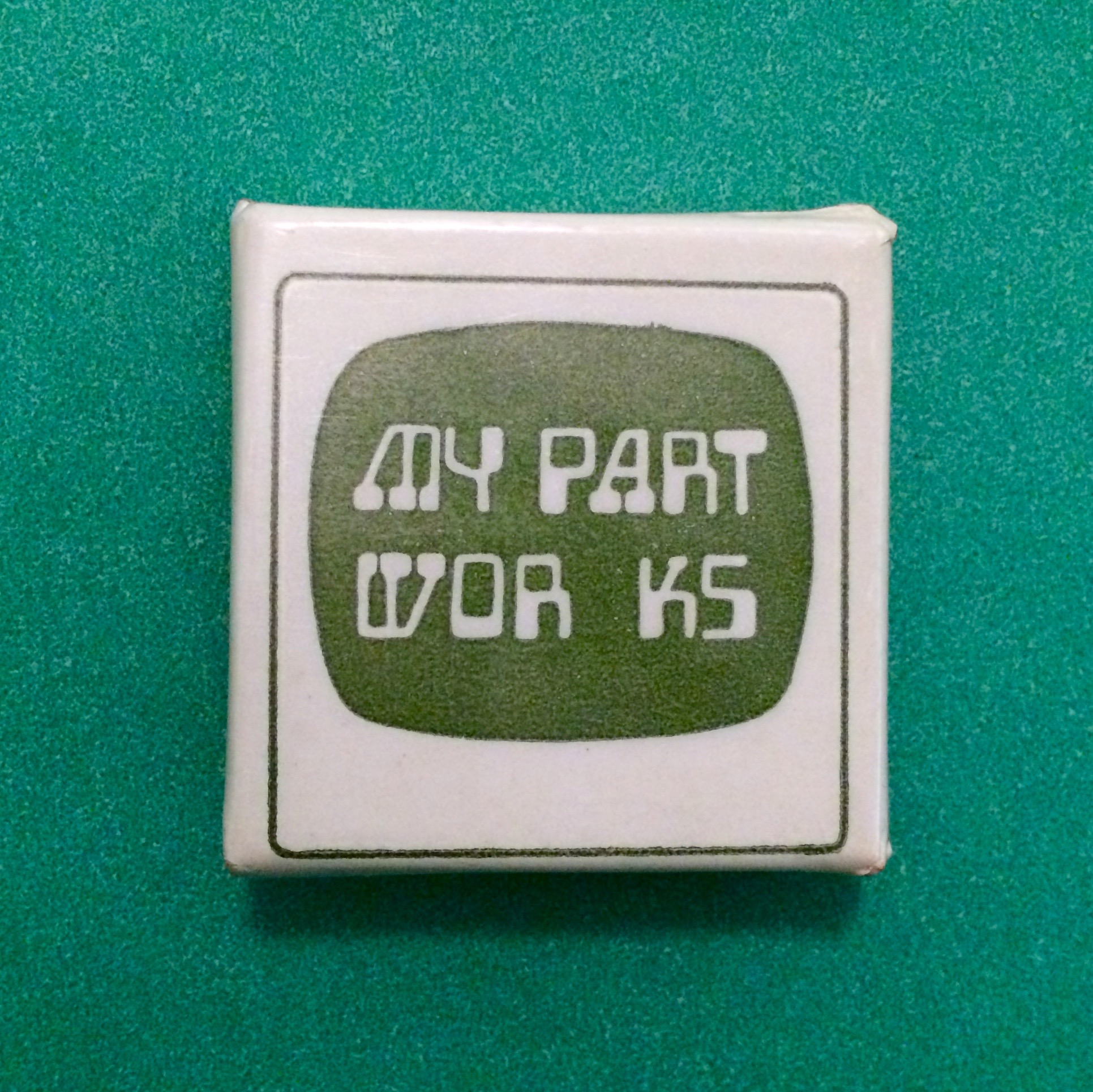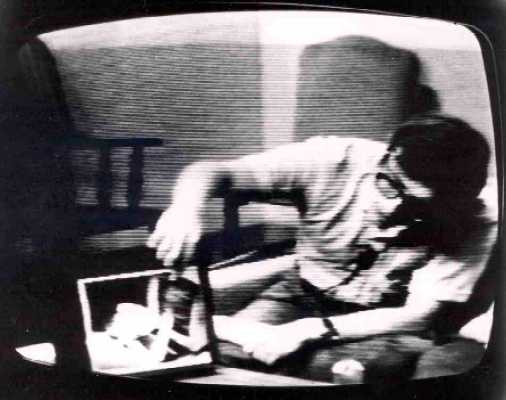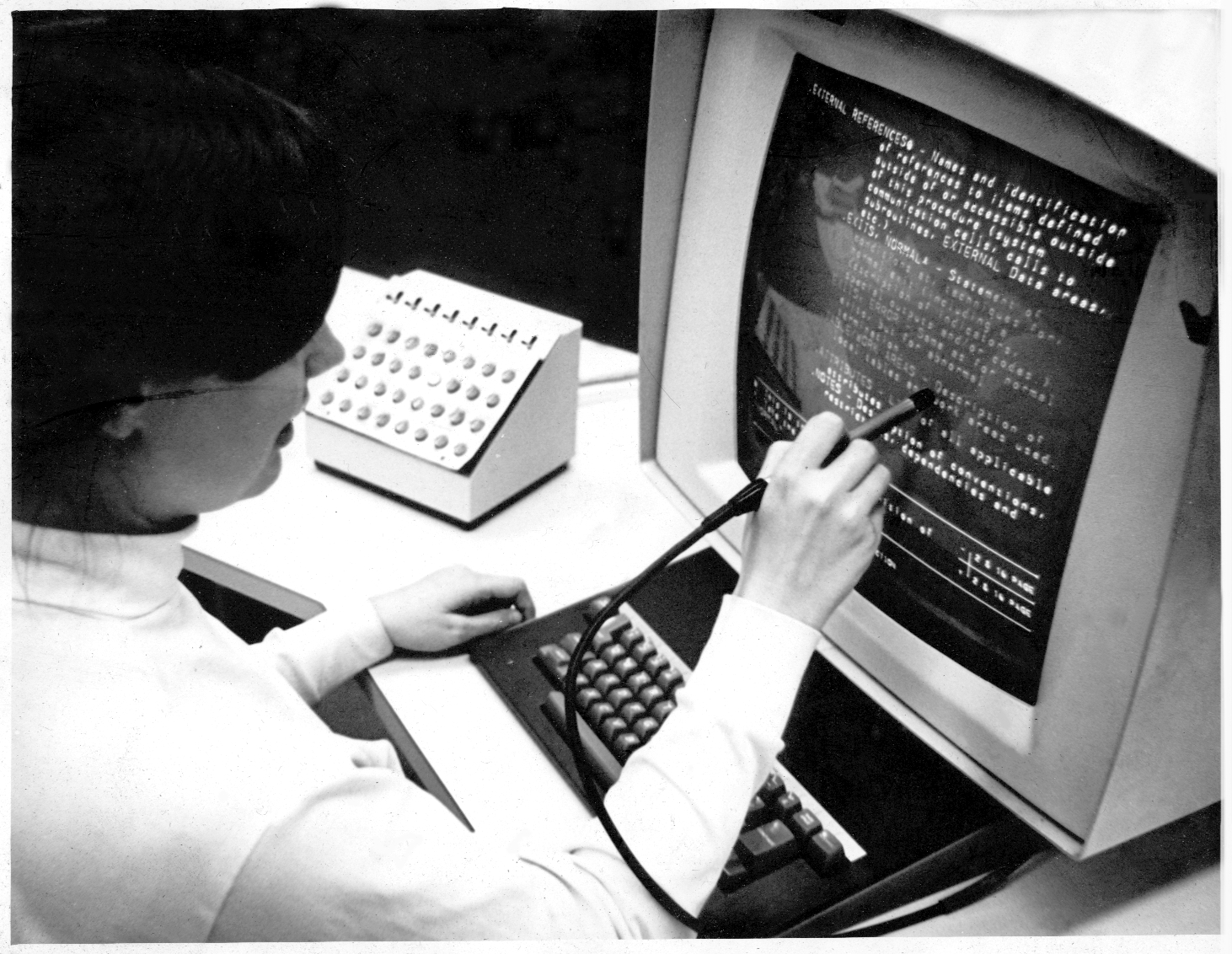My Part Wor ks
 About 50 years ago, Andy van Dam joined the Brown University faculty with the world's second PhD in Computer Science (earned at the University of Pennsylvania). Today many of Andy’s friends, faculty, students and former students are celebrating his 50 years at Brown with Stone Age, Iron Age and Machine Age panels. [ June 9, 2015 update: See event video: Celebrate with Andy: 50 Years of Computer Science at Brown University ]
About 50 years ago, Andy van Dam joined the Brown University faculty with the world's second PhD in Computer Science (earned at the University of Pennsylvania). Today many of Andy’s friends, faculty, students and former students are celebrating his 50 years at Brown with Stone Age, Iron Age and Machine Age panels. [ June 9, 2015 update: See event video: Celebrate with Andy: 50 Years of Computer Science at Brown University ]
I’m part of the Stone Age cohort. In 1968 Andy and his Swarthmore colleague Ted Nelson gave a medicine show pitch to convince skeptical undergrads to sign up for an an insanely demanding one year, four course sequence then called Applied Math 101/102 and 103/104. I bit.
Starting with a tiny, two person department - and as a matter of principle - Andy recruited undergraduates as teaching and research assistants, a tradition that continues to this day. In an essay on the history of the Brown CS UTA [Undergraduate Teaching Assistant] program Andy said:
“Offering teaching and research assistant opportunities to undergrads,” he says, “was even more unusual, indeed was viewed with everything from skepticism to outright hostility. Hardly anyone said, ‘What a fantastic idea!’ Everyone was used to four years of preparation as an undergraduate, then n years of graduate work before you could contribute to a science. But we’re different. CS was and is young, experimental, and open for undergrads to contribute. And undergraduate participation in research in all fields has become commonplace, especially in the last decade.”
In 1965, a single, intense full-year course could cover much of the breadth, if not the depth, of the systems-oriented portion of the discipline, not including theory, AI, numerical analysis, and a few other topics. Andy insisted that students couldn’t learn to be good programmers by solving small “toy” problems; they had to write significantly-sized programs, each taking multiple weeks.
Not just checking for the right answer but giving useful feedback on structure, style, and efficiency required careful reading and one-on-one help with concepts and debugging. In a class with forty students, it was impossible for one graduate TA and a professor to provide this level of attention, no matter how little sleep they were getting, so van Dam asked for help from students who had taken a prior programming course. In that first cohort, he remembers Bill Adcock; Dan Bergeron, who also subsequently got his PhD with Andy and became Chairman of the CS Department at UNH and went with him and a group of six other of Andy’s students for his first sabbatical in 1971 at the University of Nijmegen in Andy’s country of origin; and Dennis Ruggles, among others.
“The undergraduate teaching assistants,” Andy explains, “though they were initially called graders, didn’t just grade programs -- they not only provided one-on-one help to students but also became active participants in course design and in subsequent years read research papers and brought new ideas into the curriculum. In fact, they did everything graduate TAs did, becoming producers and not just consumers of education. We kept modifying the course as we went along, but the one constant was the highly-appreciated UTA system.”
Few people appreciate it more than Ed Lazowska ‘72, who will lead the first (“Stone Age”) panel for Celebrate With Andy. He says, “I’m a faculty member precisely because of the UTA program. I went to grad school because Andy told me to. In some way, everything I do professionally today is due to him.”
To provide feedback for the course, students wrote detailed, multi-page evaluations, something that was almost unheard of in 1965. As Bob Munck recalls, “Also after every class, the graders would sit around on the floor of Andy's office (later my office) and critique the lecture and him. I'd never seen anything like it.”
On his commute home from work, Andy would listen to tape recordings of his lectures, filling the empty minutes with self-critiques: “Boy, was that a clumsy explanation! Get rid of the ‘um’s and the ‘you know’s.” Presentation skills are still something that van Dam is keenly interested in. “Today’s equivalent of ‘you know’ is ‘like’, which I try to stamp out in all students who work with me. I’ve given up on ‘awesome’.”
An interesting aspect of the UTA program is that the system has essentially never been challenged by students due to the built-in checks and balances. “By having rotating TAs and detailed rubrics,” Andy says, “you create fairness. It’s a system that’s at least as fair as having a single faculty member grading. Besides, a single faculty member, even assisted by a few graduate TAs, can’t begin to read that many programs at the required level of detail, and students recognize that. Part of the checks and balances is that faculty members are responsible for assigning the final grades, and I personally review all borderline grades, hoping to find evidence for promotion to the next grade bin.”
Originally something made up as they went along, the UTA program matured over a period of decades. Iteration and gradual regularization brought cross-course norms and standards that are used today by almost all Brown CS courses. “In my opinion,” says Andy, “We have the most systemic TA program, and there’s a well-defined appeal system in place to address any grading errors.”
You can read about Andy’s honors and achievements on his Wikipedia page, and Professor Shriram Krishnamurthi's answer to Why is professor Andy Van Dam (Andy) so cool? Here are two short stories from me.
After Dinner

Photo of Andy on WBGH Boston’s After Dinner show, broadcast live at 7:30PM Monday October 20, 1969.
After Dinner featured Andy van Dam, Chris Braun, Bev Hodgson (then Brown Daily Herald editor), Al Basile and myself talking about hypertext for 30 minutes on a stage set that was supposed to look like a professor’s living room, right next to Julia Child’s WGBH TV kitchen. Andy is pointing to photo of Chris Braun at the IBM 2250 Hypertext Editing System (HES) console.
AvD writes: You might mention that the topic wasn’t just hypertext per se, but the use of hypertext for non-linear narratives, esp. hypertext fiction as a new literary form (Montreal Expo (68) had just shown an audience-influenced branching movie, Burroughs’ Naked Lunch and Nabokov’s Pale Fire had been published, and experimentation was in the air. I’m sitting in the audience at the YURT inauguration symposium, listening to organizer John Cayley talk about “Cave Writing” and related spatial (immersive) hypertext projects that he and his students craft.
My Part Wor Ks

Brown Computer Science circa 1969. Original edition.
The story as I recall: Most people chose an individual final project for AM 101/102. However, a few folk chose the two person assembler project.
A grader did an in person review with a two person team, noting a problem. One team member replied: “My part works, but he keeps passing me garbage.”
It became a team programming mantra.
The first part was made into a button, with Wor ks spelling. The second part was the AvD equivalent of a secret handshake. Until now.
More
Related
Andries van Dam - Wikipedia page
Celebrate With Andy: 50 Years Of CS At Brown - May 2015. An essay celebrating "the three golden anniversaries for the Brown CS family: fifty years of the UTA program, undergraduate involvement in research, and Andy van Dam at Brown."
Why is professor Andy Van Dam (Andy) so cool? - Quora, Jan 2015. I agree with Brown CS professor Shriram Krishnamurthi.
Pastepost - One more AvD story. The first public document from the first Hypertext Editing System was a press release announcing its own creation.
As We May Work - Andy van Dam - Tokyo 2008
The MIT/Brown Vannevar Bush Symposium - Celebrating the 50th anniversary of Bush's As We May Think. Organized and MC'd by Andy van Dam
Hypertext Editing System - Wikipedia page. Photo by Greg Lloyd.


 I18N ERROR: @tsiskin#footer_RSS_Feed
I18N ERROR: @tsiskin#footer_RSS_Feed